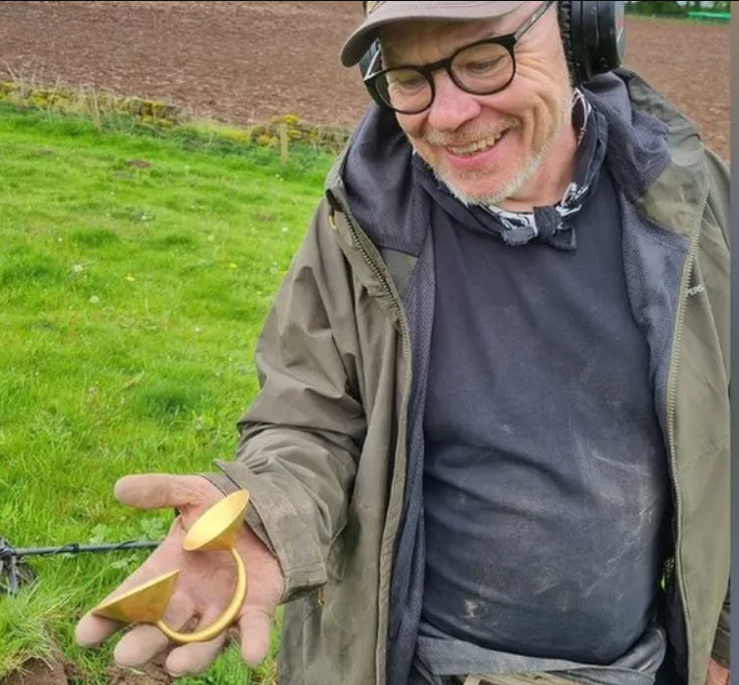Je to krasavec 👍🙂 vypadá trochu jako držátko z kuchyňský linky... 😁
A beautifully preserved gold buckle from the Bronze Age as the best find of the year
Categories: Nálezy nejenom s detektorem ve Velké Británii a Irsku
Amateur detectorist Jonathan Needham from Staffordshire has discovered a remarkable 3,000-year-old gold pin dating back to the Late Bronze Age. It was used to fasten a dress or cloak and must have belonged to a high-ranking person. Experts say it is the best-preserved pin of its type ever discovered in Britain and only the seventh overall.
"People immediately said it was 3,000-year-old gold and at that point we could celebrate," Mr Needham told BBC News of the first moments after the find. "We were literally gobsmacked by what we found," he said, adding that he immediately reported his find to Derby Museum in accordance with theTreasures Act 1996, which requires members of the public to report significant archaeological finds.
The wrought gold clasp, weighing 109 grammes and measuring 127mm in total length, bears two sub-conical "skilfully crafted cone-shaped finials" on either side, about 23mm high and 55mm in diameter, thewhich could be used to fasten a dress, skirt or cloak, although their appearance is reminiscent of (and may have been inspired by) contemporary bracelets with flared ends.
The central, bow-shaped axis of circular cross-section is 4 to 8 mm thick (in the centre) and was probably bent after the end-pieces were moulded. The clasp is generally only lightly worn, with a single scratch and no sign of any decoration. Given the workmanship and gold material, the clasp must have belonged to an important person. According to archaeologists, it is likely to have originated in Ireland and provides a "cultural link between Ireland and Britain during the Bronze Age".
It is one of a total of seven similar clasps ever found in England and Wales, but scientists consider it to be "the best preserved example from Britain". The British Museum itself regards the find as one of the UK's most important archaeological discoveries in 2023. The museum plans to acquire the work as part of its permanent collection, with the proceeds to be split between the finder and the landowner.
Roman Nemec
Sources: bbc.com, livescience.com, britishmuseum.org

soon after the discovery

in the field

the finder Jonathan Needham

Clip

Photo sent to us by the finder :)
The article is included in categories:



